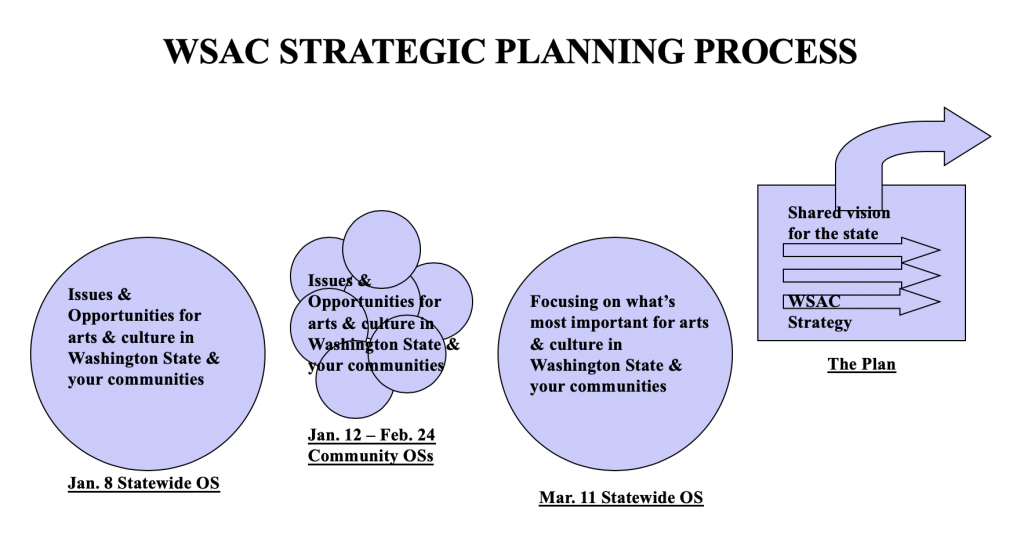Washington State Arts Commission Strategic Plan

The Governor’s Call for Action
In 1997, recognizing the value of arts to citizens, tourism, business, education and communities, Governor Gary Locke launched an initiative to strengthen arts funding in Washington State. He appointed a Blue Ribbon Arts Task Force to review State support of the arts and recommend ways “to ensure that our cultural life remains strong.”
…After a one-year review Governor Locke’s Arts Task Force called for strengthening WSAC’s role and developing a “thoughtful plan for increased funding.”
With strong statewide support for those recommendations, the 1999 Legislature approved a $750,000 increase to WSAC’s budget – the first budget increase the agency had received in a decade. The funding increase came with the requirement that WSAC submit a strategic plan to Governor Locke and key State leaders by June 30, 2000. This plan is the result of that charge, and the outcome of a planning process that stretched across the state.
Planning on the Arts: Voices of the People
From the early stages of this planning process, WSAC envisioned a statewide conversation about the arts that would strengthen the state’s arts resources and expand the impact and effectiveness of the arts for all residents. Through two statewide meetings, 18 community meetings, several meetings of the Washington State Arts Commission, an online forum and a dedicated phone line, WSAC recorded the views, concerns, ideas and dreams from people across the State. More than 1000 people were involved directly in the development of this plan. Their testimony, stories, deliberation and reflection are the foundation for this strategic plan.
In the statewide and community meetings, the format used was Open Space Technology, a process to enable large groups of people to explore complex issues. Participants at each session recorded the discussion in a summary format that could be understood readily by someone who wasn’t there. True to the spirit of Open Space Technology, the discussions were driven by passion for the arts and responsibility for the issues and opportunities faced individually and collectively.
Excerpt from “Planning On The Arts: Washington State Arts Commission’s Strategic Plan”
Reflections on the process
When WSAC first contacted me, their biggest concern with an open, “conversational” meeting format was that community divisions would drown out any possibility of a cohesive plan. East vs. west, big organization vs. small organization, rural vs. urban. Participants would focus on their own agenda and fight over a small financial pie. In fact, just the opposite happened. People came together and focused on their common hopes and aspirations for strengthening the arts throughout the state. The plan became an occasion for an unprecedented commitment to inclusion of many perspectives. As a result, when sent out for comment, the plan was enthusiastically received. Everyone found their voice reflected. Ironically, the fear of conflict was released so completely, that the significance of its absence was barely noted.
Behind the scenes: Supporting the meetings
To support the 20+ meetings held by WSAC, a call was issued for skilled Open Space practitioners in Washington State. More than 20 people agreed to participate. We convened a train-the-trainer session that introduced them to WSAC, the process, engaged them in finalizing the meeting design, and provided them the logistical information they needed.
Meetings ranged in size from 5 to 100. Depending on the anticipated size, some practitioners worked in pairs, others alone. They took their work seriously – every commitment to participate was honored by these practitioners. In addition, at the train-the-trainer, we agreed to share experiences via e-mail as the events took place. The unanticipated result was a rich conversation among practitioners that enabled each meeting to build on the learnings from the ones that came before.

